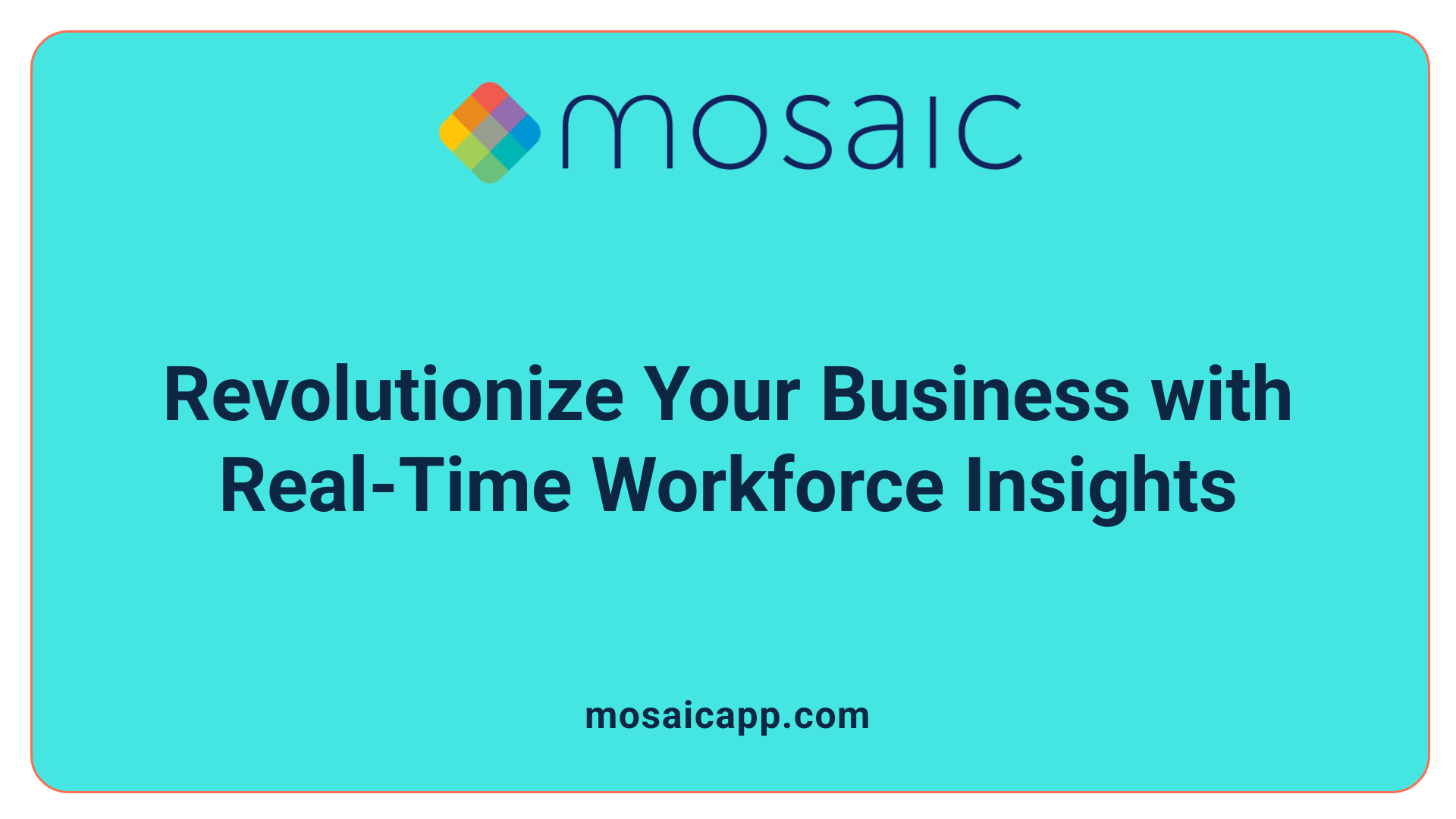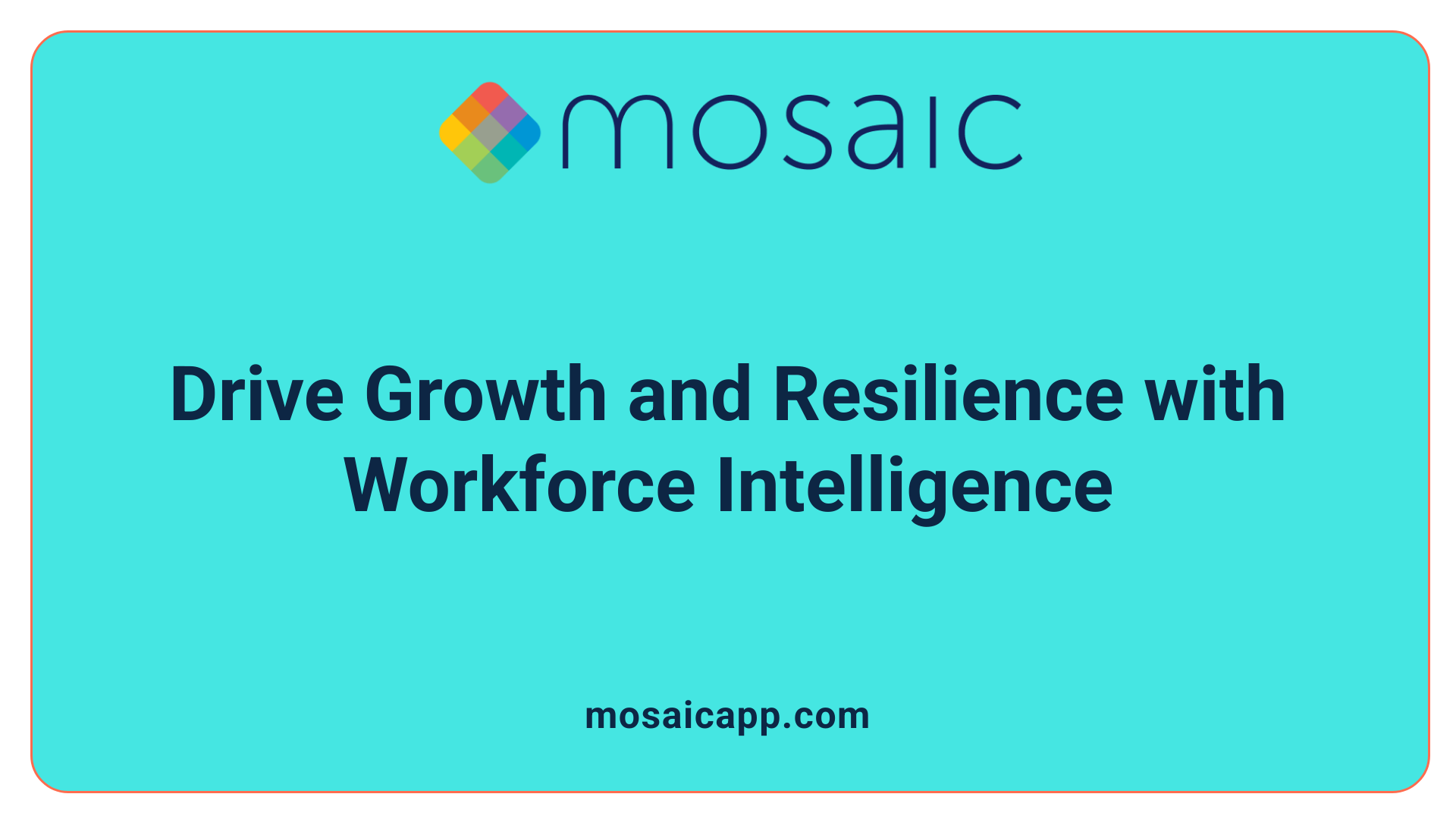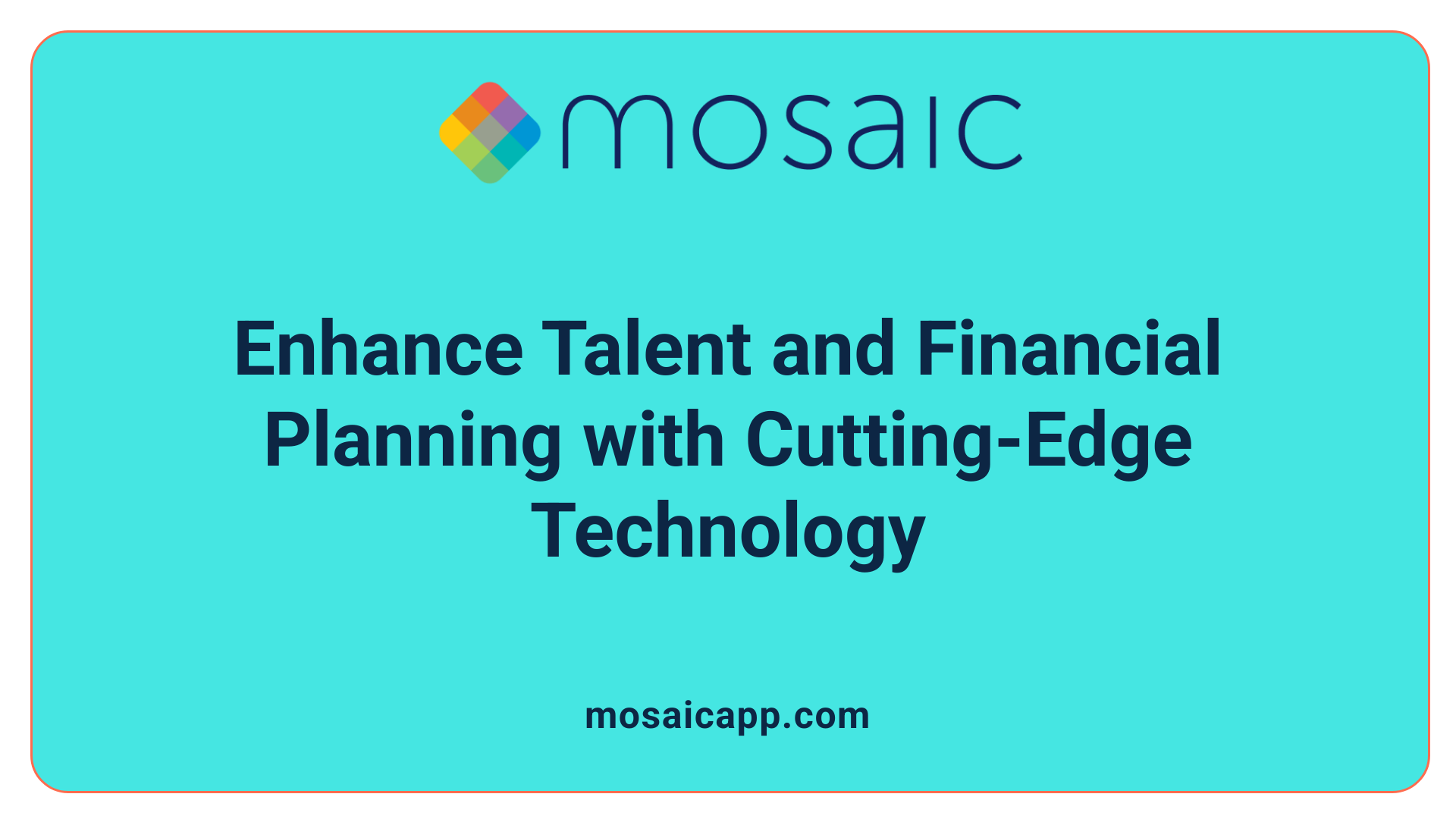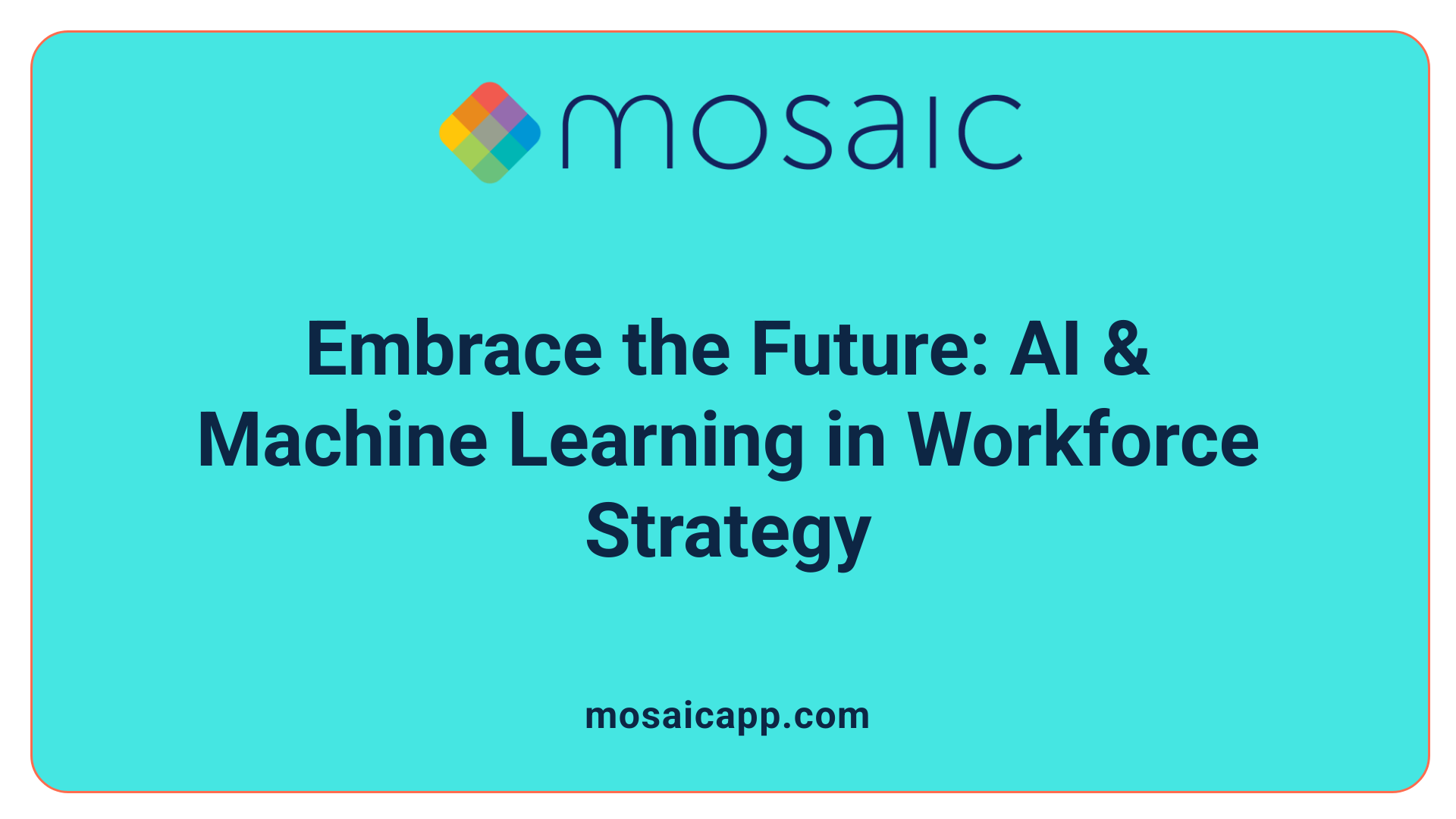Understanding the Role of Workforce Intelligence in Future-Proofing Business Decisions
In today’s rapidly evolving market landscape, organizations face unprecedented challenges and opportunities. Workforce intelligence, with its data-driven insights powered by AI, connects internal and external data sources to critically inform talent and financial strategies. This article explores how advanced analytics and real-time workforce data serve as vital tools for organizations aiming to secure their future through smarter decision-making and adaptive talent management.
Transforming Decision-Making with Real-Time Workforce Data

How does real-time workforce data influence financial and talent strategies?
Real-time workforce data plays a pivotal role in shaping both financial and talent strategies within organizations. By providing current, actionable insights, it enables companies to respond swiftly to market dynamics and technological advancements.
One of the primary applications is strategic workforce planning (SWP). Utilizing real-time data allows organizations to forecast future talent requirements more accurately, identifying skill gaps and reskilling needs over a 3- to 5-year horizon. This proactive approach helps maintain a resilient and adaptable workforce.
Furthermore, real-time insights support scenario planning by simulating various market or operational changes, helping leaders evaluate potential impacts on talent and costs. This data-driven approach facilitates cost optimization, allowing companies to align their workforce size and skills with current and future needs.
The integration of workforce analytics also enhances agility, empowering organizations to redeploy talent efficiently amid evolving industry trends such as automation and remote work. External data sources, like labor market trends, combined with internal workforce metrics, enable benchmarking against industry standards and competitor strategies.
By examining these factors in real time, executives can make informed decisions about automation impacts, talent retention, and investment priorities. This results in optimized talent deployment, reduced overhead costs, increased employee engagement, and strategic alignment.
Overall, leveraging real-time workforce data transforms decision-making, fostering a flexible, informed, and competitive organizational environment that is well-equipped for future challenges.
Strategic Benefits of Workforce Intelligence for Business Growth

What are the benefits and strategic importance of workforce intelligence for decision-making?
Workforce intelligence plays a vital role in shaping strategic decisions in modern organizations. By harnessing real-time data, AI, and advanced analytics, companies gain deeper insights into their employees, skills, and evolving market demands.
One of its primary advantages is improved talent management. Workforce intelligence helps identify skills gaps and predict areas impacted by automation, allowing organizations to plan targeted reskilling initiatives and develop clear career paths for employees. This proactive approach supports talent retention and helps maintain a competitive edge.
Furthermore, workforce insights enable agile decision-making. For example, organizations can quickly analyze internal and external labor trends—such as attrition rates, productivity levels, and market benchmarks—without lengthy delays. This rapid access to data ensures timely responses to workforce challenges and strategic shifts.
It also aligns human resources with broader business goals. Insights into workforce composition, investment areas, and sentiment shifts support strategic planning, from expansion to restructuring. Companies like Salesforce use AI-powered talent platforms to identify skills gaps and conduct workforce adjustments in real-time, demonstrating practical benefits.
Another critical advantage is enhanced operational resilience. By continuously monitoring workforce health and sentiment, organizations can detect early signs of risk, such as declining morale or trust issues, especially during significant company events like IPO preparations.
In summary, workforce intelligence elevates decision-making by providing actionable insights that foster smarter resource allocation, support sustainable growth, and ensure organizations adapt swiftly to market and technological changes. It becomes an essential strategic tool for organizations aiming to optimize human capital and maintain competitive agility.
Future-Proofing Talent and Finance through Advanced Analytics

How can workforce intelligence future-proof talent and finance decisions?
Workforce intelligence plays a crucial role in helping organizations prepare for future challenges by offering a comprehensive, real-time view of their internal and external labor landscapes. By integrating internal HR data with external labor market insights—such as industry trends, skill demands, and emerging roles—companies can make more informed strategic decisions.
Advanced analytics and knowledge graphs are at the heart of this approach. They allow organizations to simulate various scenarios, helping leaders understand potential impacts of automation, skill shortages, or market shifts. This proactive view supports agile workforce planning, enabling businesses to adapt swiftly.
A focus on skills-based approaches and reskilling initiatives broadens the talent pool. Companies can identify critical skill gaps, promote targeted reskilling programs, and support internal mobility. These strategies mitigate skill shortages and align workforce capabilities with evolving business requirements.
Tools like micro-credentialing and hybrid workforce models enhance this agility. They allow organizations to continuously update skills, bolster resilience, and respond effectively to rapid technological changes, including fintech innovations and AI advancements.
By utilizing a combination of real-time data, scenario simulation, and knowledge graphs informed by labor market insights, organizations can make better decisions about talent development and financial planning. This integrated strategy ensures that talent and financial resources are aligned, fostering organizational resilience and competitive advantage in an ever-changing market environment.
Supporting Talent Management and Financial Strategies with Technology

How do workforce and people intelligence technologies support talent management and financial decisions?
Workforce and people intelligence technologies, such as Aura’s platform, play a crucial role in helping organizations make informed talent management and financial choices. These tools convert raw employee data into meaningful insights that shape strategic planning and operational execution.
One of the main functions of these technologies is to identify skill gaps within the organization. By analyzing internal data and combining it with external labor market signals, companies gain a clear picture of current capabilities and future needs. This holistic view enables targeted talent acquisition, effective reskilling programs, and succession planning, leading to reduced hiring costs and improved retention.
Predictive analytics elevate decision-making by forecasting workforce trends, such as potential attrition or emerging skill requirements. For example, AI-powered talent platforms can suggest new career paths for employees impacted by automation, supporting internal mobility and engagement.
Furthermore, integrating internal data with external factors like industry shifts and economic signals ensures a comprehensive understanding of talent trends. This integration aids in aligning workforce development with financial performance, optimizing investments in human capital.
Organizations like Salesforce exemplify this approach by utilizing AI-driven talent platforms for agile planning and skill gap analysis. Such solutions enable companies to adapt quickly to market changes, maintaining competitive edge while controlling costs.
Overall, workforce intelligence tools facilitate proactive and strategic decision-making. They enhance workforce agility, improve the accuracy of talent-related forecasts, and support the organization’s broader financial and operational objectives.
The Role of AI and Machine Learning in Shaping the Future Workforce

What are the future trends and AI applications in workforce and talent management strategies?
Looking ahead, workforce management is set to become increasingly intertwined with artificial intelligence (AI) and machine learning (ML) technologies. Organizations are adopting AI-powered talent platforms to identify skills gaps, conduct agile planning, and make faster, data-driven decisions.
AI will continue to refine job role definitions, helping companies predict which roles might be impacted by automation. This allows proactive reskilling initiatives tailored to both current employee strengths and future needs.
As AI models analyze vast internal and external data sources, leaders can forecast labor market shifts, identify emerging skill demands, and adjust strategies accordingly. Such capabilities make workforce planning more dynamic and real-time.
In addition, AI applications are personalizing employee development. From mapping skills to designing individual training paths to analyzing engagement data, AI helps enhance workforce agility.
Organizational strategies will also evolve, emphasizing soft skills like creativity, emotional intelligence, and adaptability—areas where humans excel today.
In leadership, there is a rising need to foster a culture of continuous learning, address AI-related anxieties, and develop roles such as chief trust officers to oversee responsible AI deployment.
Furthermore, AI-driven analytics facilitate rapid insights into workforce health, productivity, and sentiment. This enables companies to respond swiftly to internal challenges and external market changes.
In summary, AI and machine learning are reshaping talent management by enabling smarter decision-making, personalized employee growth, and strategic agility for the future workforce.
Harnessing Workforce Intelligence for a Resilient Future
As organizations navigate an increasingly complex world, leveraging workforce intelligence emerges as a critical strategic advantage. By harnessing the power of real-time data, AI, and predictive analytics, companies can make smarter talent and financial decisions, mitigate risks, and proactively adapt to industry shifts. Investing in innovative tools and cultivating a data-driven culture will enable organizations to build resilient, agile workforces capable of thriving amidst future disruptions. The journey towards comprehensive workforce intelligence is integral to securing sustainable growth and maintaining competitive edge in the evolving marketplace.
References
- What Is Workforce Intelligence, And Why Is It Important?
- Make Smarter Financial Decisions [Webinar] - Aura Intelligence
- The missing foundation: Unlocking workforce intelligence ...
- Future-Proofing Your Business with People Intelligence
- Future-Proofing Your Organization
- What Is Workforce Intelligence, And Why Is It Important?
- What is Workforce Intelligence: Understanding It | NiCE
- What is Workforce Intelligence and Why is it Important?
- What Is Workforce Intelligence And Why Is It Important?
- Workforce Intelligence Defined: Top Benefits for Businesses


